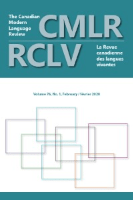
CANADIAN MODERN LANGUAGE REVIEW-REVUE CANADIENNE DES LANGUES VIVANTES
Scope & Guideline
Empowering Educators through Innovative Language Research
Introduction
Aims and Scopes
- Multilingual Education and Plurilingualism:
The journal explores the dynamics of multilingual education, emphasizing plurilingual approaches that recognize and integrate students' diverse linguistic backgrounds into the learning process. - Language Teacher Development:
It focuses on the preparation and continuous development of language teachers, investigating their identities, beliefs, and pedagogical strategies to enhance teaching effectiveness in diverse classrooms. - Language Assessment and Proficiency:
The journal examines various aspects of language assessment, including proficiency tests and feedback mechanisms, to understand their impact on language learning outcomes. - Sociocultural and Political Dimensions of Language:
Research often addresses the sociopolitical contexts of language use, including issues of identity, power dynamics, and the role of language in heritage and immigrant communities. - Innovative Pedagogical Practices:
The journal highlights innovative teaching practices and curricular designs that foster engagement and language acquisition, particularly in minority language contexts. - Technology in Language Education:
It investigates the integration of technology in language teaching and learning, exploring how digital tools can enhance linguistic interactions and learning experiences.
Trending and Emerging
- Plurilingual Approaches and Language Awareness:
There is a growing focus on plurilingual education, which recognizes the importance of students' multiple languages and promotes language awareness and identity development. - Impact of Immigration and Refugee Experiences:
Research increasingly addresses the challenges and experiences of immigrant and refugee students in language learning contexts, highlighting the need for supportive pedagogical practices. - Anti-Bias and Anti-Racist Education:
Emerging studies emphasize the importance of developing anti-bias and anti-racist stances in language education, aiming to create equitable learning environments for all students. - Indigenous Language Revitalization:
There is a rising interest in Indigenous language education and revitalization efforts, reflecting a broader societal movement towards reconciliation and recognition of Indigenous languages and cultures. - Digital and Online Language Learning:
The journal has seen an increase in research on the use of digital tools and online platforms for language learning, particularly in response to the shifts necessitated by the COVID-19 pandemic.
Declining or Waning
- Traditional Language Teaching Methods:
There is a noticeable decrease in studies focusing on traditional language teaching methods, as the journal increasingly emphasizes innovative and technology-integrated approaches to language education. - Monolingual Language Policies:
Research related to strictly monolingual language policies is dwindling, as the journal shifts its focus towards more inclusive, multilingual frameworks that reflect Canada’s linguistic diversity. - Standardized Language Testing:
There is a reduction in the exploration of standardized testing methods, which may indicate a growing skepticism about their effectiveness in truly assessing language proficiency and learning.
Similar Journals
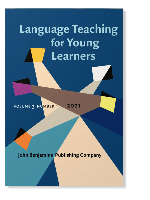
Language Teaching for Young Learners
Transforming language education for the next generation.Language Teaching for Young Learners, published by John Benjamins Publishing Co, is a premier journal dedicated to enhancing the pedagogy of language acquisition in early childhood education. Since its inception in 2019, it has rapidly established itself within the research community, reflected by its high Scopus rankings—placing it in the 85th percentile for Language and Linguistics and the 84th percentile for Education. The journal aims to provide a platform for innovative research, practical insights, and theoretical discussions surrounding the teaching of languages to young learners, thus contributing significantly to the fields of Education and Linguistics. With an open access model currently unavailable, it caters to a diverse global audience, including researchers, educators, and policy-makers, keen on improving pedagogical practices. Located in the Netherlands, the journal's commitment to academic excellence is evident through its Q1 and Q2 rankings in Linguistics and Language and Education respectively, encouraging continual discourse in cultivating effective language education practices.

TESL Canada Journal
Bridging Theory and Practice in Language LearningTESL Canada Journal, published by TESL Canada, serves as a vital resource for researchers, educators, and practitioners in the field of English as a Second Language (ESL) and applied linguistics. With its commitment to advancing scholarship and best practices in language education, this esteemed journal fosters a platform for the dissemination of high-quality research and innovative pedagogical approaches. Although it operates without open access, its comprehensive articles and reviews offer valuable insights into current trends and challenges faced by ESL educators across Canada and internationally. The journal is dedicated to promoting a deeper understanding of language acquisition processes and instructional methodologies, contributing significantly to the professional development of its readership. Located in Burnaby, Canada, the journal aims to bridge the gap between theory and practice, making it an indispensable source for educators and researchers looking to enhance their expertise in ESL education.
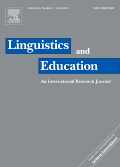
Linguistics and Education
Advancing Knowledge at the Intersection of Linguistics and EducationLinguistics and Education, published by Elsevier, is a premier journal dedicated to advancing the understanding of the intersections between linguistics and educational practices. With its ISSN 0898-5898 and E-ISSN 1873-1864, this journal has established itself as a significant platform since its inception in 1988, continuing to produce impactful research up to 2024. It enjoys a prestigious Q1 ranking in both the Education and Linguistics and Language categories, reflecting its high-quality contributions and leading role in the field. The journal’s Scopus rankings further underscore its influence, being placed in the 87th percentile for Arts and Humanities in Language and Linguistics, and the 86th percentile in Social Sciences in Linguistics and Language. Although it operates under traditional subscription access, its contributions are essential for researchers, professionals, and students alike, making substantial strides in the understanding of language, learning environments, and pedagogical strategies. The journal's objective is to foster interdisciplinary dialogue and disseminate innovative research that informs educational policy and practice.

ELIA-Estudios de Linguistica Inglesa Aplicada
Empowering Linguistic Discourse: Where Academia Meets InnovationELIA-Estudios de Linguistica Inglesa Aplicada, published by the University of Sevilla, Faculty of Philology, is an esteemed open-access journal that has been a cornerstone in the field of English Linguistics since its establishment in 2000. With an ISSN of 1576-5059 and an E-ISSN of 2253-8283, ELIA aims to foster scholarly research and discourse by providing a platform for innovative studies in linguistics and applied language studies. As a testament to its academic rigor, the journal has achieved a Q2 ranking in Linguistics and Language for 2023, reflecting its impact and relevance within the academic community. The journal is indexed in Scopus, further solidifying its standing with ranks in both the Arts and Humanities and Social Sciences categories. Researchers, professionals, and students alike will find valuable insights and research findings that contribute to the evolving understanding of English linguistics. The journal is based in Sevilla, Spain, and can be accessed freely online, making it an accessible resource for those engaged in the study of language and linguistics.
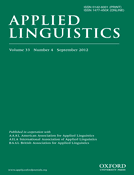
APPLIED LINGUISTICS
Connecting Scholars Through Language and CommunicationApplied Linguistics, published by Oxford University Press, is a premier scholarly journal that has significantly contributed to the fields of linguistics and communication since its inception in 1980. With an impressive impact factor and ranked in the top quartile (Q1) in both Communication and Linguistics and Language categories, Applied Linguistics is recognized for its rigorous peer-reviewed articles that explore the intersections of language, society, and cognition. The journal enjoys a remarkable position in the Scopus rankings, placing it among the top 2% of publications in its discipline. Researchers, professionals, and students benefit from its comprehensive scope, which encompasses innovative research on language acquisition, discourse analysis, and applied linguistics methodologies. Although not an open access journal, its commitment to advancing knowledge and fostering academic discussions makes it an indispensable resource for anyone interested in the critical role of language in various contexts.

Journal of Research in Applied Linguistics
Transforming Language Education and SociolinguisticsJournal of Research in Applied Linguistics is an esteemed academic journal published by Shahid Chamran University Ahvaz, Iran, focusing on the dynamic field of linguistics and language studies. With an ISSN of 2345-3303 and an E-ISSN of 2588-3887, the journal has established itself as a valuable resource for researchers and professionals aiming to explore diverse issues related to applied linguistics, including language acquisition, pedagogy, and sociolinguistic interactions. As part of a robust academic community since its inception in 2017, it is recognized with a Q2 quartile ranking in the world of linguistics and achieved impressive Scopus ranks reflective of its growing impact, particularly within the arts and humanities. The journal embraces an open access policy, enhancing its reach and availability to a broad audience. Researchers, educators, and students alike will find in the Journal of Research in Applied Linguistics a critical platform for dialogue, innovation, and contribution to the evolving landscape of language research.
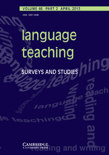
Language Teaching
Elevating language teaching standards through premier research.Language Teaching, published by Cambridge University Press, is a premier peer-reviewed journal that has been at the forefront of the linguistics and language education field since its inception in 1969. With an impressive impact factor positioning it in the top tier (Q1) of its category, this journal is ranked 22nd among 1,088 in the Arts and Humanities field and maintains an outstanding 98th percentile ranking. Focusing on innovative research and methodologies in language teaching and learning, Language Teaching provides a vital platform for discussing the latest developments in pedagogy, applied linguistics, and curriculum design. Although it does not offer open access options, it reaches a broad audience of researchers, educators, and practitioners dedicated to enhancing language instruction across various contexts. The journal continues to evolve, with plans to cover emerging trends and challenges in language education until 2024, making it an essential resource for anyone invested in the teaching of languages.

Heritage Language Journal
Connecting Communities through Language ResearchThe Heritage Language Journal is an esteemed publication dedicated to the field of heritage language studies, providing a platform for advanced research and discussions surrounding bilingualism, language maintenance, and cultural identity. Published by BRILL, a recognized leader in academic publishing, this journal aims to bridge the gap between theory and practice, offering insightful articles, empirical studies, and critical reviews that advance understanding of how heritage languages influence personal and community identity. With an ISSN of 1550-7076, the journal serves as an essential resource for researchers, professionals, and students engaged in linguistics, sociolinguistics, and multicultural studies. Although currently not an open-access journal, it maintains rigorous academic standards and is committed to fostering an inclusive dialogue on heritage languages worldwide. Additionally, by contributing to the ongoing discourse in this vital area of study, the Heritage Language Journal plays a significant role in preserving linguistic diversity and cultural heritage.
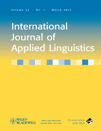
International Journal of Applied Linguistics
Connecting Theory and Practice in Applied LinguisticsInternational Journal of Applied Linguistics, published by WILEY, is a premier platform for cutting-edge research in the field of applied linguistics. With a notable Impact Factor and ranked in the top Q1 quartile of linguistics and language, this journal serves as an essential resource for scholars, practitioners, and students. The journal’s wide-ranging scope includes various subfields such as language acquisition, language education, sociolinguistics, and discourse analysis, fostering multidisciplinary approaches to language studies. It has achieved a significant Scopus Rank, placing it in the 90th percentile for both Arts and Humanities as well as Social Sciences categories, reflecting its high visibility and influence in the academic community. The International Journal of Applied Linguistics is committed to advancing the understanding of language use in real-world contexts through rigorously peer-reviewed articles that contribute to both theory and practical applications. While it is not an open-access journal, it remains a highly respected publication for researchers looking to disseminate and acquire knowledge in applied linguistics.
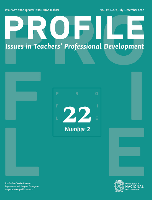
Profile-Issues in Teachers Professional Development
Elevating Standards: Research-Driven Approaches to Teacher TrainingProfile - Issues in Teachers Professional Development is a distinguished open access journal published by the Universidad Nacional de Colombia, Facultad Ciencias Humanas, aimed at fostering research and discourse surrounding critical issues in educators' ongoing professional development. Since its inception in 2005, the journal has established itself as a significant resource within the fields of Education and Linguistics and Language, reflecting its relevance through its category quartiles, being positioned in Q3 in Education and an impressive Q1 in Linguistics and Language for 2023. The journal boasts a commendable Scopus ranking, reflecting its impact and commitment to advancing scholarly discussion, with rankings of #236 out of 1167 in Linguistics and Language, and #818 out of 1543 in Education. With a converged timeline from 2018 to 2024, it serves as a vital platform for educators, researchers, and students alike, encouraging the dissemination of innovative practices and insights essential for the evolution of teacher training and professional growth in a rapidly changing educational landscape.